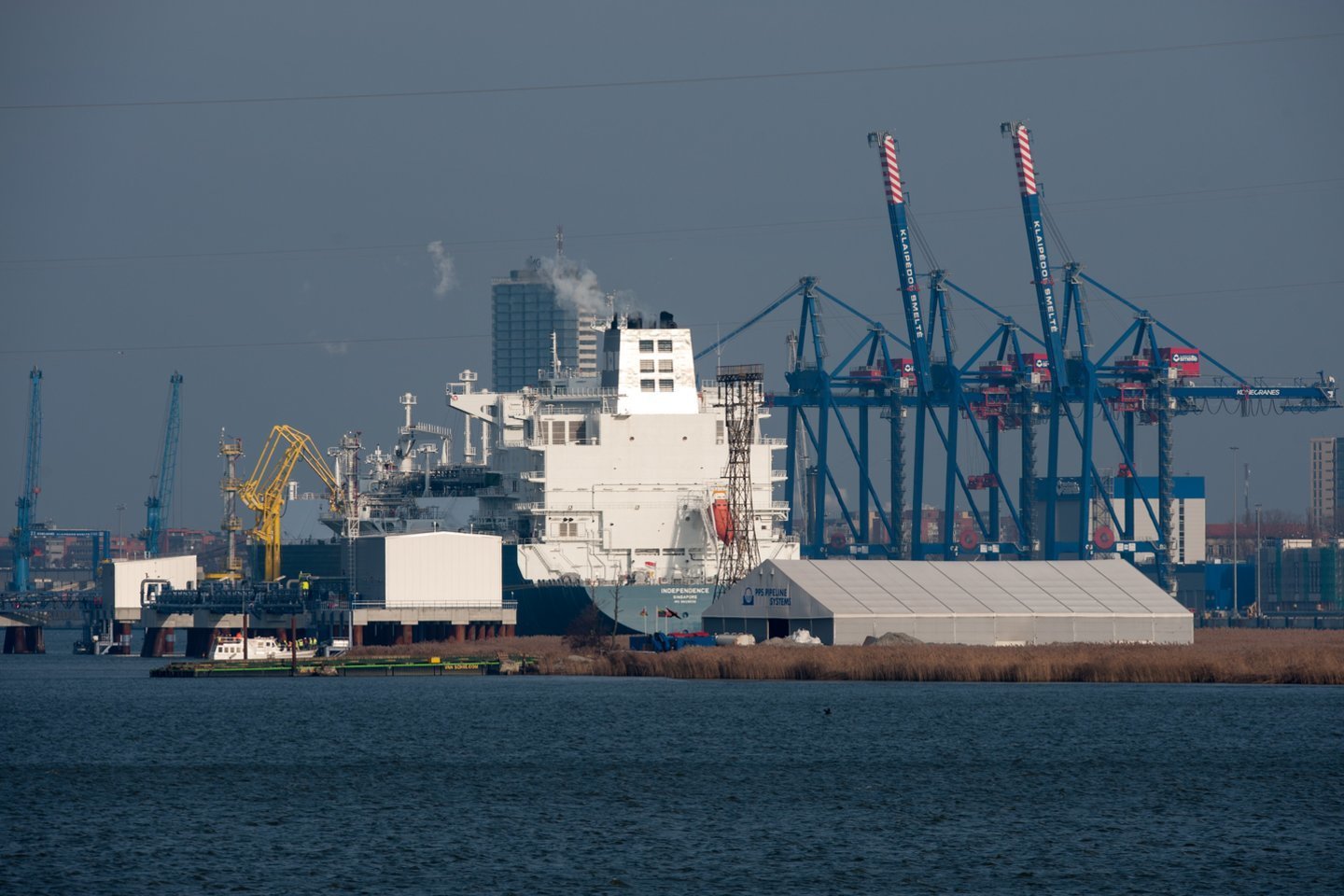When Russia resorted to so-called gas blackmail, several European countries started planning their own LNG terminals. Lithuania had done its homework long ago – Independence in Klaipėda has been operating since 2014.
In January this year, another terminal opened in Finland's Inga port. The Poles are planning to build one in Gdansk Bay.
Our neighbours, the Latvians, are also shaken up. The Latvian Parliament has declared the Skulte LNG terminal a major project for the country, to be completed by 2024.
However, Latvia's main gas supplier, Latvenergo, signed a 10-year gas supply contract with the Klaipėda LNG terminal at almost the same time. This means that the future terminal in Latvia lost its main buyer and had to ask for state aid.
These measures include securing the financial flows necessary for the operation of the terminal for the first few years (EUR 2–5 million annually) and ordering Latvenergo to sign a contract similar to the one it currently has with the Klaipėda LNG terminal. If this company were to sign an agreement with the Skulte LNG terminal in advance, there would be no need for State support.
Despite its importance for Latvia's energy independence, Prime Minister Krišjānis Kariņš refused to support the development of the terminal, and the project has stalled. At the same time, the Latvian government started negotiations on cooperation with Estonia for the joint use of the Paldiski terminal.
This Latvian foot-stomping can benefit our terminal and the company that operates it, Klaipėdos nafta.
Already last year, a procedure for allocating the long-term capacity of the Klaipėda LNG terminal was carried out, during which 60% of the capacity (24 terawatt-hours each year) was allocated to the users of the terminal who conclude long-term contracts. This ensured that Independence was effectively occupied for as long as ten years until 2033.
According to Orinta Barkauskaitė of Klaipėdos Nafta, the long-term capacity has been allocated to four terminal users from Lithuania and neighbouring countries on a „take or pay“ basis. The remaining capacity (40%) is divided annually through annual and spot market capacity allocation procedures.
The Latvian energy company Latvenergo has also secured long-term capacity at the terminal, with 6 terawatt hours (TWh) of capacity per year.
Such contracts with neighbours that do not have their own terminals are an opportunity to expand Independence's capacity. The terminal has been operating at total capacity for a year.
Klaipėdos Nafta and Amber Grid launched a project in 2022 to assess the possibility of expanding the current dispensing capacity of the Klaipėda LNG terminal, together with the capacity of the gas transmission system at the relevant entry and exit points, to allow additional LNG import capacity to be reserved for the future.
„The project would create up to an additional 2.5 billion cubic metres per year of LNG import capacity, tentatively from the first quarter of 2027.
Between December 2022 and Q1 2023, the operators conducted a non-binding market survey which identified significant interest in expanding the current import capacity of the Klaipėda LNG terminal. It is planned to announce a binding survey of market participants in the future“, – said O.Barkauskaitė.
Virgilijus Poderys, Head of the Lithuanian Energy Agency, questioned whether Latvia's plans to build its own terminal are sufficiently assessed from an economic point of view.
„According to what is happening now, terminals in Lithuania and Finland should be sufficient for our region especially since there is also a gas interconnection with Poland.
The latter is also considering a terminal near Gdansk, but not only for the Polish market, but also for gas transit to Ukraine and Czechia. Therefore, I do not see any business rationale for building another terminal in the short term“, Poderys said.
The Klaipėda LNG terminal, the main gas supply source to Lithuania and the other Baltic countries accounted for 90.1% (8.9 TWh) of all gas transported into the system in the first quarter of 2023. Flows from Latvia accounted for 6.2% (0.6 TWh) and from Poland for 3.7% (0.4 TWh).
In the first quarter of 2023, Lithuania consumed 3.2 TWh of gas, or 44% less than in the winter of 2022, when the country's gas demand reached 5.7 TWh.
However, according to Amber Grid, the volume of gas transported to Lithuania increased despite lower domestic consumption.
In the first three months of this year, 9.9 terawatt-hours (TWh) of gas were delivered to Lithuania, excluding transit to Kaliningrad. This is an increase of 18.5% compared to 8.4 TWh at the same time last year. Most of these imports (around 70%) were transited to other EU countries.

